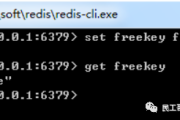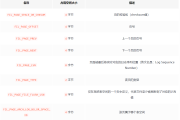Flask 新手教程:SQLAlchemy的 ORM 技术
在 Flask Web 应用程序中使用原始 SQL 执行数据库 CRUD 操作可能会很乏味。相比之下,Python 工具包 SQLAlchemy 是一个功能强大的 OR 映射器,可为应用程序开发人员提供 SQL 的全部功能和灵活性。 Flask-SQLAlchemy 是 Flask 扩展,为 Flask 应用程序添加 SQLAlchemy 支持。
什么是ORM(对象关系映射)?
大多数编程语言平台都是面向对象的。另一方面,RDBMS服务器上的数据以表格形式存储。对象关系映射是一种将对象参数映射到底层 RDBMS 表结构的技术。 ORM API 提供了无需编写原始 SQL 语句即可执行 CRUD 操作的方法。
在这一部分中,我们将学习使用 Flask - SQLAlchemy 的 ORM 技术并创建一个小型 Web 应用程序。
步骤 1 - 安装 Flask-SQLAlchemy 扩展。
pip install flask-sqlalchemy
步骤 2 - 需要从此模块导入类 SQLAlchemy。
from flask_sqlalchemy import SQLAlchemy
第 3 步 - 现在创建一个 Flask 应用程序对象并设置要使用的数据库的 URI。
app = Flask(__name__)
app.config['SQLALCHEMY_DATABASE_URI'] = 'sqlite:///students.sqlite3'
步骤 4 - 然后使用应用程序对象作为参数创建 SQLAlchemy 类的对象。该对象包含 ORM 操作的辅助函数。它还提供了一个父模型类,在其中声明用户定义的模型。下面的代码片段创建了一个学生模型。
db = SQLAlchemy(app)
class students(db.Model):
id = db.Column('student_id', db.Integer, primary_key = True)
name = db.Column(db.String(100))
city = db.Column(db.String(50))
addr = db.Column(db.String(200))
pin = db.Column(db.String(10))
def __init__(self, name, city, addr,pin):
self.name = name
self.city = city
self.addr = addr
self.pin = pin
步骤 5 - 要创建/使用 URI 中指定的数据库,请运行 create_all() 方法。
db.create_all()
SQLAlchemy 的 Session 对象控制 ORM 对象上的所有持久化操作。
以下会话方法执行 CRUD 操作 -
- db.session.add(模型对象)- 将记录插入到映射表中
- db.session.delete(模型对象)- 从表中删除记录
- model.query.all() - 获取表中的所有记录(相当于 SELECT 查询)。
可以使用 filter 属性将过滤器应用于搜索到的记录集。例如,如果你想获取表students中city = '海口'的记录,请使用以下语句 -
Students.query.filter_by(city = 'Haikou').all()
的入口点是绑定到 URL => ‘/’ 的函数 show_all()。学生记录文件作为参数传递给 HTML 模板。模板中的服务器端代码呈现 HTML 表中的记录。
@app.route('/')
def show_all():
return render_template('show_all.html', students = students.query.all() )
模板 (show_all.html) 的 HTML 脚本如下所示 -
<html>
<head>
<meta http-equiv="Content-Type" content="text/html; charset=utf-8" />
<title>Flask示例</title>
</head>
<body>
<h3>
<a href = "{{ url_for('show_all') }}">学生列表 - Flask
SQLAlchemy示例</a>
</h3>
<hr/>
{%- for message in get_flashed_messages() %}
{{ message }}
{%- endfor %}
<h3>学生 (<a href = "{{ url_for('new') }}">添加
</a>)</h3>
<table>
<thead>
<tr>
<th>姓名</th>
<th>城市</th>
<th>地址</th>
<th>Pin</th>
</tr>
</thead>
<tbody>
{% for student in students %}
<tr>
<td>{{ student.name }}</td>
<td>{{ student.city }}</td>
<td>{{ student.addr }}</td>
<td>{{ student.pin }}</td>
</tr>
{% endfor %}
</tbody>
</table>
</body>
</html>
new() 的超链接。单击后,将打开一个包含学生信息的表格。数据在 POST 方法中发送到相同的 URL。模板文件:new.html如下 -
<html>
<head>
<meta http-equiv="Content-Type" content="text/html; charset=utf-8" />
<title>Flask示例</title>
</head>
<body>
<h3>学生信息 - Flask SQLAlchemy示例</h3>
<hr/>
{%- for category, message in get_flashed_messages(with_categories = true) %}
<div class = "alert alert-danger">
{{ message }}
</div>
{%- endfor %}
<form action = "{{ request.path }}" method = "post">
<label for = "name">姓名</label><br>
<input type = "text" name = "name" placeholder = "Name" /><br>
<label for = "email">城市</label><br>
<input type = "text" name = "city" placeholder = "city" /><br>
<label for = "addr">地址</label><br>
<textarea name = "addr" placeholder = "addr"/><br>
<label for = "PIN">城市</label><br>
<input type = "text" name = "pin" placeholder = "pin" /><br>
<input type = "submit" value = "提交" />
</form>
</body>
</html>
当POST中发现嵌入http方法时,插入表单数据学生,应用程序返回到显示数据的主页。
@app.route('/new', methods = ['GET', 'POST'])
def new():
if request.method == 'POST':
if not request.form['name'] or not request.form['city'] or not request.form['addr']:
flash('Please enter all the fields', 'error')
else:
student = students(request.form['name'], request.form['city'],
request.form['addr'], request.form['pin'])
db.session.add(student)
db.session.commit()
flash('Record was successfully added')
return redirect(url_for('show_all'))
return render_template('new.html')
以下是完整的应用程序代码 (app.py)。 ?添加链接”以打开学生信息表。
![]()
填写表格并提交,提交的数据将在首页列出。操作完成后,您将看到如下所示的输出。
![]()
//阅读更多:https://www.yiibai.com/flask/flask_sqlalchemy.html
版权声明
本文仅代表作者观点,不代表Code前端网立场。
本文系作者Code前端网发表,如需转载,请注明页面地址。
 code前端网
code前端网



